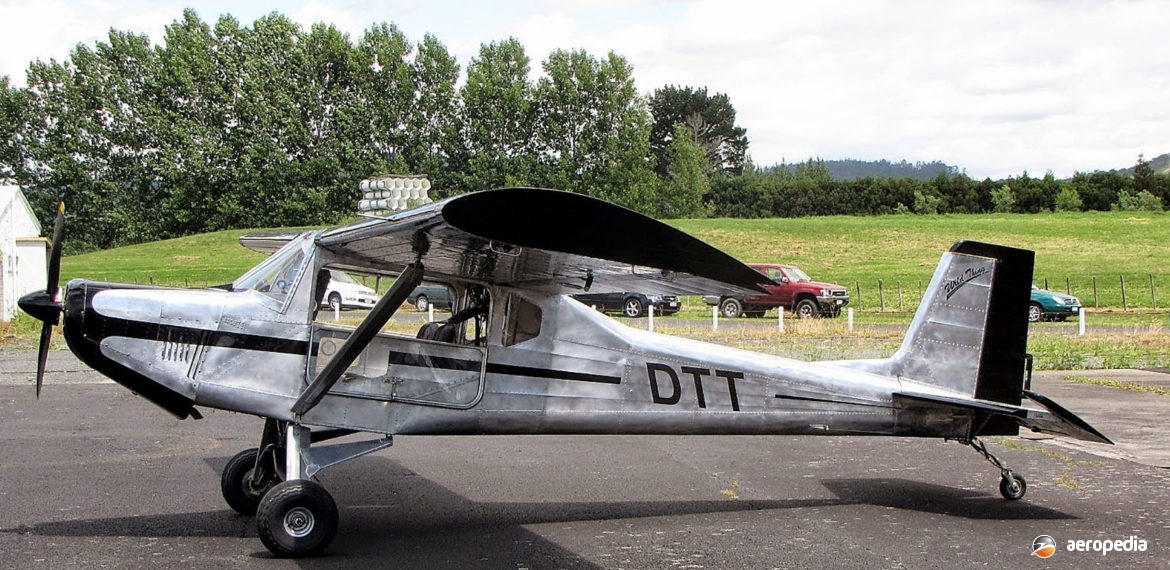Photograph:
Ulbi WT-01 Klassik ZK-DTT² (c/n 052) at the North Shore aerodrome, New Zealand in May 2015 (Keith Morris – NZCIVAIR)
Country of origin:
Germany
Description:
Two-seat light sport monoplane
Power Plant:
One 60 kw (80 hp) Jabiru 3300 four-cylinder horizontally-opposed air-cooled engine
Specifications:
- Wingspan: 9.2 m (30 ft 2 in)
- Length: 6.49 m (21 ft 4 in)
- Height: 1.9 m (6 ft 2 in)
- Wing area: 13.8 m² (148.46 sq ft)
- Max speed (VNE): 200 km/h (124 mph)
- Max manoeuvring speed: 151 km/h (94 mph)
- Cruising speed: 150 km/h (93 mph)
- Stalling speed: 58 km/h (36 mph)
- Rate of climb: 240 m/min (787 ft/min)
- Take-off roll: 170 m (558 ft)
- Landing roll: 180 m (591 ft)
- Range: 750 km (466 miles)
- Fuel capacity: 80 litres (17.6 Imp gals)
- Empty weight: 275 kg (605 lb)
- Loaded weight: 472 kg (1050 lb)
History:
The WT-01 and WT-02 Klassik aircraft, known as the Wild Thing, were introduced to the light aircraft market in 1997 by ULBI (Ultr-Leight-Bau International GmbH at Hafurt) in Germany as a two-seat light sporting aircraft, being a strutted, high-wing aircraft, the basic variation in the two models being the installation of a tricycle undercarriage or a tailwheel. It was basically a German development of the American kit aircraft, the Murphy Rebel. It was available with three engines, the 60 kw (80 hp) Jabiru A2200; the 90 kw (120 hp) Jabiru A3300 or the 75 kw (100 hp) Rotax 912S driving a Helix H-50 fixed-pitch carbon composite propeller. Construction was all metal and it had some STOL performance. It was suitable for bush-pilots and explorers, and also for training, glider towing etc.
The first example seen in this region was imported in 2010, becoming ZK-DTT² (c/n 052 – ex D-MDTT), this aircraft having tundra tyres, a reinforced undercarriage and a Junkers Magnum ballistic recovery parachute. It fell in New Zealand into the Class 2 Microlight category, having an all-up-weight of 544 kg (1,199 lb) whereas the Murphy Rebel had an all-up-weight of 750 kg (1,653 lb). This aircraft was built by owner/builder Jersey Seipel in Germany. It was first registered on 15 October 2010. It had a Jabiru 3300 six-cylinder engine and first flew in New Zealand at Parakia on 11 October 2010.

